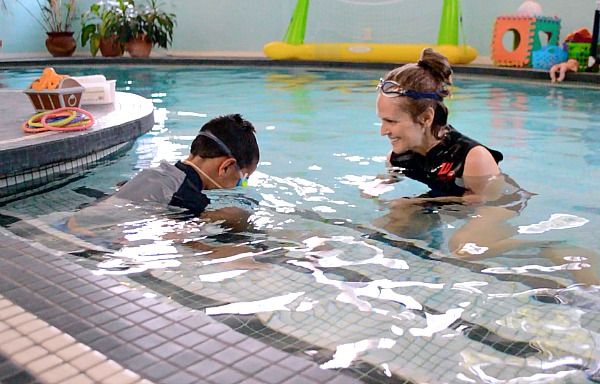 Learning to swim seems like a pretty simple thing for most adults and maybe most parents, but it can be horrifying to a young child. The thought of getting submerged into a pool of water might be the most traumatic thing to ever possibly happen in a child’s young life. Teaching a child to overcome the fear of water might become an important thing to do before teaching them to float and/or swim. Let’s examine this for a few minutes.
Learning to swim seems like a pretty simple thing for most adults and maybe most parents, but it can be horrifying to a young child. The thought of getting submerged into a pool of water might be the most traumatic thing to ever possibly happen in a child’s young life. Teaching a child to overcome the fear of water might become an important thing to do before teaching them to float and/or swim. Let’s examine this for a few minutes.
This Fear Might Just Be Natural
What’s natural to one person isn’t always natural to everybody else. Every child is different! Many experts claim that children just begin to develop a natural fear to pools of water after 6 months of age. I’m not saying it’s 6 months of age, but I do believe that the older a child gets, their fear of deep water grows with them.
Children have quite an imagination. It seems like the older these children get, the “monsters” growing under that water are growing at an even faster pace. After a while, these lurking “monsters” are the cause of a lot of problems when teaching a child to swim.
Negative Past Experiences
Sometimes a child has had bad experiences in the past that has occurred in and around water. For a young child, they are afraid these bad experiences will happen again when they find themselves in a similar situation.
For example, maybe a sibling or friend pushed them while they were previously in the pool which caused them to lose their breath and gasp for air. This was not at all fun for them. They don’t want this to happen again… NOT at all!
Simple Steps to Teach Them to Overcome the Fear of Water
Try these simple things:
Sitting on the Edge of the Pool and Dangle Their Feet
Get them use to the calm, natural feel of the water. Sit with them on the edge of the pool. Try your best to make sure that the water is shallow. Place something reflective on the bottom of the pool to show and emphasize that the water is shallow.
This is particularly helpful if the child has just been scared of “plain, old water”.
Blow Bubbles in the Water
Show the child that it’s fun just to bend down and blow bubbles on the surface of the water. This gets the child use to getting their mouth and chin slightly under the water.
Submerging their Heads
After the child has become somewhat more comfortable being in and around the water, gently persuade them to submerge their heads into the water while sitting there in the shallow water.
At first, it’s even helpful to have them wear goggles so that they can see under the water. This will help convince them that the “monster” is not coming.
Go slow with all this. Don’t rush. Be patient. This an important time in a child’s life and part of growing up.
Life Saver Survival Swim School, LLC Can Help You with All of This
We’ve had nearly 20 years of experience. That’s not to say that we’re not all still learning. Like we have said before, every child is different. However, we are more likely to recognize the problems that a child is having around water. So, we are more likely to adjust to it.
If you think you might like some help teaching your child to float and/or swim, give us a call at Life Saver Survival Swim School. Our owner’s name is Bonnie and she is frequently the one to answer the telephone. Give us a call at (832) 366-3008. Or, you can reach us by email.

